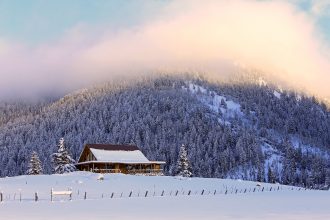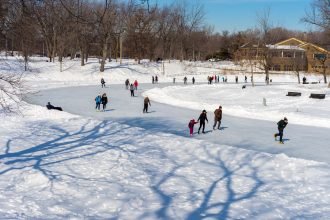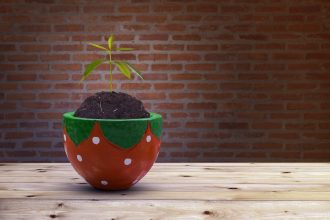Labour Day weekend has come and it’s almost over, and as much as we don’t want to admit it, summer is coming to a close. It’s hard to imagine blizzards and scarves and snow shovels when the weather is still so warm, but it’s time to face the facts; winter is coming. While there might be a few more opportunities to get away before the cold sets in, it’s time to start preparations for closing the cottage for the season.
Closing the cottage, just like opening, is as much a ritual as it is a chore. To ensure that your cottage stays safe through the winter, it’s important not to miss a step. Take a look at the tips below to help you close the cottage for the winter and have a stress-free opening weekend next spring.
Wipe down

Photo by Syda Productions/Shutterstock
Cleaning is not a crucial closing step; however, it’s still really important. A good scrub means there will be less to do when spring arrives. The last thing you want when cottage season starts again is a smelly fridge or dirty toilet leftover from the year before.
Spend some time in each room; cleaning everything you can see as you systematically move through the entire cottage. Wipe counters, mop floors, scrub sinks and toilets, clean the fridge, shake out rugs, do the laundry. Cover mattresses and furniture with plastic sheets and place mothballs or dryer sheets in drawers, under beds, and in the bottom of closets. Not only will you feel so much better coming back to a clean cottage, you’ll also deter bugs and critters from spending their winter eating crumbs in your kitchen.
Pack it up

Photo by Youproduction/Shutterstock
After everything is clean, it’s time to organize, pack, and put away. Fold your laundry and linens and neatly place them in the drawers and closets. Make everything easier to find in the spring by spending a little extra time organizing now.
This step also includes dealing with food. Pack up everything, including canned goods, to prevent animals from breaking in to have a snack. If you’re going to leave a few non-perishables behind, just make sure you store them in an airtight, chew-proof container. Mice can make their way into almost any space, while raccoons are known to open drawers and cabinets.
Walk around

Photo by paul90g/Shutterstock
Head outside and do the walk around. Pack up any outdoor furniture, tools, and water toys. Make sure everything is locked inside the cottage or outbuilding, or out of sight from the road and lake to deter theft. Arrange and clean any storage sheds and take an inventory of anything that needs to be replaced or fixed before spring.
Inspect the cottage itself to make sure it will make it through rough winter weather. Check the roof for weak spots and fix any damage, clean the eaves and clear all drains, and make sure all nearby trees are cut back to keep falling branches from causing damage. Take down the dock, or lift it out of the water to protect it from ice, and check under the cottage for any damage or access areas for critters.
Flip the switch

Photo by Shayneppl/Shutterstock
Now it’s time to go around disconnecting power and unplugging all the appliances. After unplugging the fridge, use a chopstick or small piece of wood to keep the door open slightly, allowing it to air out and stop mildew from growing. Drain the water heater, unplug the water pump, flush the toilets one last time, and open all the taps to remove access air and water.
Double-check anything else that needs to be turned off or shut down. Disconnect the propane from the barbecue, close the chimney damper, turn off any electrical panels, shut down the furnace and any baseboard heaters, and have the septic tank pumped if necessary.
Prepare ahead

Photo by PEPPERSMINT/Shutterstock
If you plan to visit the cottage during the cold months, or even in the spring, there are a few things to prepare ahead to make things easier when you return. Preparations inside the cottage include chopping wood and to have ready for the wood stove or fireplace. Have clean bedding separated and set aside for each room, along with enough towels for all guests.
Outdoor preparations include removing any debris, and making sure all paths are clear. Store a shovel and some salt in an easily accessible location to clear snow and make walkways and stairs safe to use. Also make sure to have candles and flashlights on hand in case you return after dark.
Lock up tight

Photo by alexkich/Shutterstock
This doesn’t just mean your front door. You need to lock your shed, boathouse, outbuildings, porch, bunkie, garage, and windows. It’s a good idea to oil any outdoor locks to protect against water damage and make them easier to open in the spring. As you’re walking around to double-check all the locks, take photographs to have on hand for insurance purposes in case there is any damage when you return.
After you shut and lock all your windows and doors, place a piece of wood along the bottom as a barrier against break-ins. Also be sure to close blinds and shutters to protect the inside from sun damage, and to further deter theft. Take home valuables and anything that would be damaged from moisture or freezing temperatures. Enjoy your winter knowing the cottage will be safe and sound when you return.
Also on RNR:

























